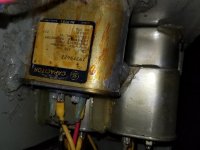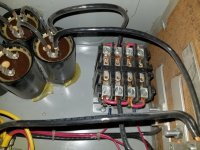Hi folks,
I just bought a Used Des-co 20HP, when I start it I can read 260v across all legs with a variance of about 2v, the phase converter does not have anything connected to it when I test it is just the motor putting power out, is the phase converter at 260v because is not under load? The CNC machine (Fadal 3016) I am going to power up requires 230 VAC according to the manual. Can I safely use this phase converter? Thank you!
I just bought a Used Des-co 20HP, when I start it I can read 260v across all legs with a variance of about 2v, the phase converter does not have anything connected to it when I test it is just the motor putting power out, is the phase converter at 260v because is not under load? The CNC machine (Fadal 3016) I am going to power up requires 230 VAC according to the manual. Can I safely use this phase converter? Thank you!


 Thank you again for your help.
Thank you again for your help.


